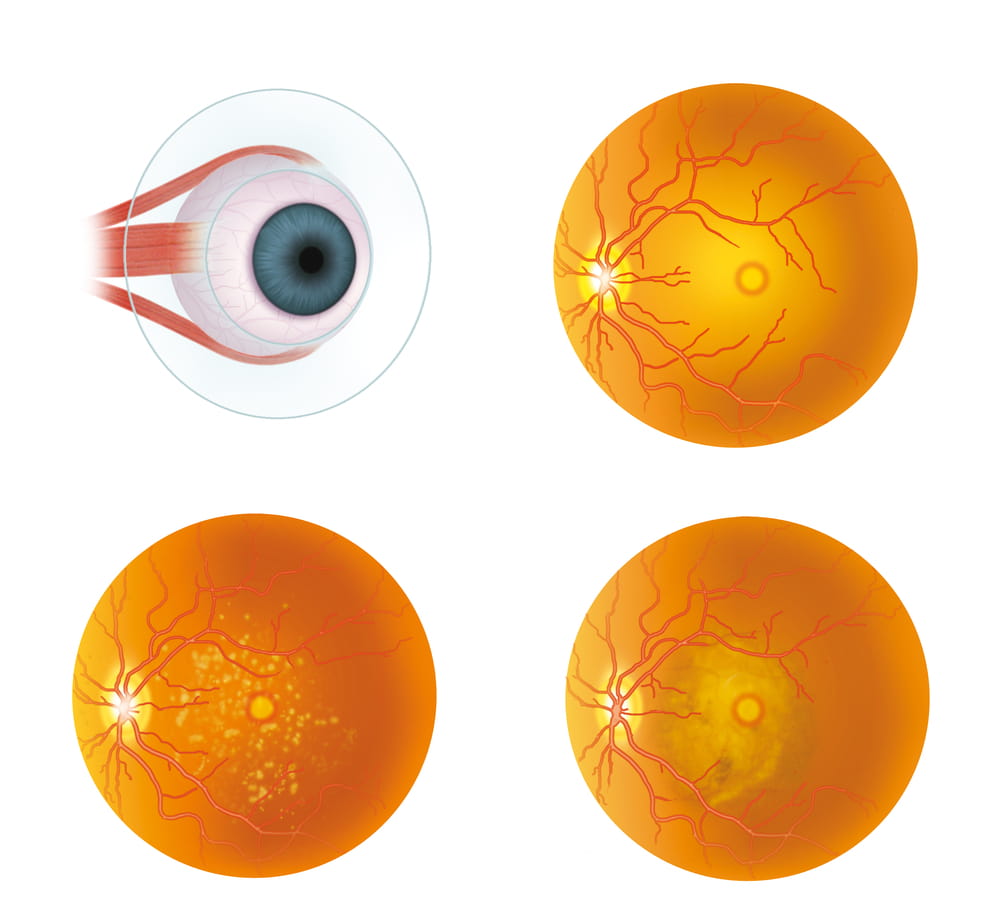Cystoid Macular Edema
What Is Cystoid Macular Edema (CME)?
Cystoid macular edema is a painless disorder which affects the central retina or macula. When this condition is present, multiple cyst-like (cystoid) areas of fluid appear in the macula and cause retinal swelling or edema.
SYMPTOMS
Blurred or decreased central vision. If you experience this symptom, contact your eye doctor for a complete exam.
CAUSES
Although the exact cause of CME is not known, it may accompany a variety of diseases such as retinal vein occlusion, uveitis, or diabetes. It most commonly occurs after cataract surgery. Risk Factors
ABOUT
1-3 % of those who have cataract extractions will experience decreased vision due to CME, usually within a few weeks after surgery. If the disorder appears in one eye, there is an increased risk (possibly as high as 50%) that it will also affect the second eye. Fortunately, however, most patients recover their vision with observation or treatment.

HOW IS CYSTOID MACULAR EDEMA DIAGNOSED?
Cystoid macular edema is usually diagnosed three ways:
Dilated retinal exam
Optical coherence tomography (OCT): OCT has become one of the best ways to diagnose and identify cystoid macular edema. OCT is a non-invasive test that uses a special light to create a high-resolution cross-sectional image of the tissues of interest, including the retina. It utilises special computer software for analysing and processing the image.
Fluorescein angiography (FFA): Fluorescein angiography involves injecting fluorescein dye in the arm (vein) and uses a special camera system to see leakage that results from blood vessels and the associated cystoid macular edema
TREATMENT FOR CME
NSAIDS – Topical or systemic indomethacin inhibits cyclooxygenase enzyme that decreases the production of prostaglandins.
Corticosteroids – Topical, periocular, systemic, intravitreal injection corticosteroids inhibit phospholipase A2 that consequently inhibits prostaglandin and leukotriene production.
There are mainly two intravitreal options Triamcinolone (tricort) or Dexamethasone (Ozurdex). Well-known side effects of steroid injection include glaucoma and cataract formation which are more with triamcinolone than dexamethasone. Also Dexamethasone being an intravitreal implant has longer duration of action in the eye (6 months) than triamcinolone
Anti-VEGF agents – Ranibizumab (Accentrix), and Bevacizumab (Avastin) act by decreasing vascular permeability from disrupted endothelial cells.
Some cases do require repeat injections for permanent cure.
Surgery - Sometimes, the vitreous (the gel that fills most of the back of the eye) pulls on the macula causing CME (vitreomacular traction).
Surgery - Sometimes, the vitreous (the gel that fills most of the back of the eye) pulls on the macula causing CME (vitreomacular traction).